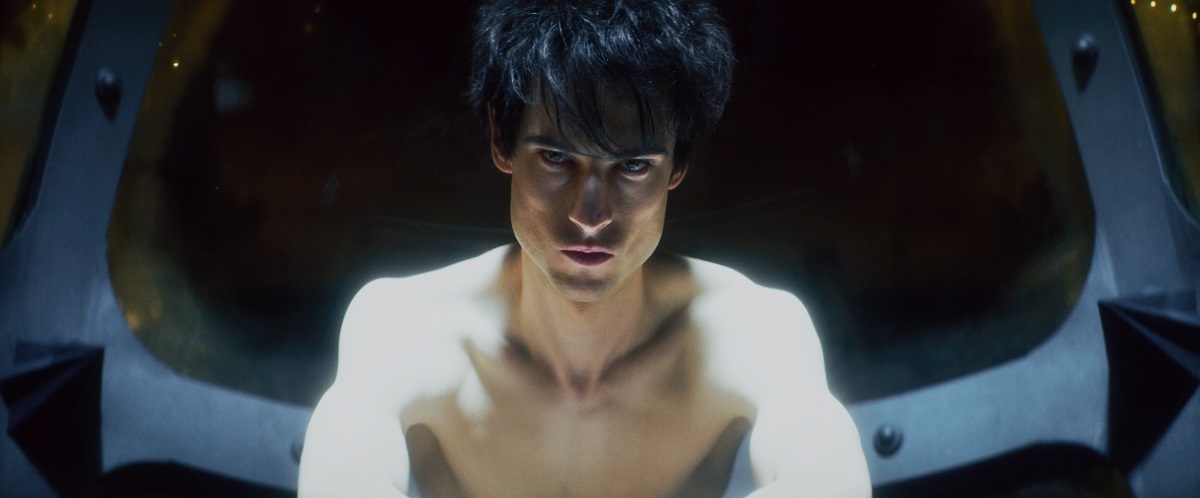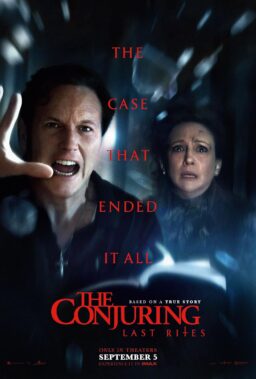When “Watchmen” came out in 2009, the official title of “Most Anticipated Comic-to-Screen Adaptation” immediately shifted to Neil Gaiman’s legendary The Sandman. After many stops and starts—including a film version produced by Joseph Gordon-Levitt that came fairly close to production—we’re finally here: “The Sandman” has officially arrived as a big-budget, prestige TV series on Netflix, with Gaiman himself as one of the show’s producers and writers. Countless diehard fans of the source material are no doubt tempted to think today, “We did it.”
But did we?
Because the Sandman comic series is, at its core, about the very nature of stories, one can’t help but be amused that reviewing this new iteration of it becomes a debate about the very nature of adapting stories. In strictly narrative terms, Netflix’s “The Sandman” is about as faithful an adaptation of the source material as could reasonably be imagined. Whether or not that’s a good thing is a litmus test for what any given viewer wants out of an adaptation.
“The Sandman” tells the story of Dream (also named Morpheus, and played by Tom Sturridge), the anthropomorphic personification of the lord of dreams, and ruler of The Dreaming, a fantastical land of story and possibility where we all spend a third of our lives. It originally began as a DC Comics series in 1988, and it lasted 75 issues before ending in 1996, becoming one of the first ongoing DC or Marvel series to end solely by creative decision rather than by a sales-motivated one. During the series’ eight-year run, it helped launch the beloved and influential Vertigo imprint in 1993 (for which it became the flagship title), and it became the first longform series from DC or Marvel to have every issue collected into graphic novels (an incalculably important change to the comic book business model). “The Sandman” was eventually collected into ten books, and the first season of the Netflix series adapts the first two volumes, Preludes & Nocturnes and The Doll’s House.
Early on in the comic series, before he started writing more for the big picture of the series as a whole, Gaiman was known for crafting incredible individual issues, and two of the most beloved chapters are “The Sound of Her Wings” (issue #8) and “Men of Good Fortune” (#13). Both stories are issue-length conversations between Dream and someone important to him; in the former, it’s his sister Death; in the latter, it’s his friend Hob Gadling. Both of these issues are wonderful, and fully earn their legendary status. And both are adapted nearly page for page, word for word, into the sixth episode of the show. That’s not a good thing.

When Gaiman crafted these stories in the late 1980s, everything about their writing was predicated on fitting them into a 24-page comic. Had “The Sandman” been, say, 40 pages per issue, one can assume these conversations might have been fleshed out further. And that’s what should have happened in the TV series, which absolutely had the time and space to reimagine these conversations for a different medium. But they didn’t even try. Instead Gaiman and his team of writers and producers punted, giving each conversation a nearly verbatim adaptation and shunting them both into the same episode of the show rather than giving either one the expanded reimagining they deserved.
This is especially frustrating in the case of the Hob Gadling story. Hob is a commoner that Dream meets at an English pub in 1389 and grants immortality to after overhearing Hob boast to his friends about how he has no intention of dying. The issue then shows Hob and Dream meeting at the same pub every hundred years as Dream asks him if he wants to keep on living. In the original comic story, each century’s meeting had to be encapsulated in just a few pages, and the lion’s share of their conversations were, presumably, left on the cutting room floor. In an interview for the 1999 book The Sandman Companion, Gaiman even admitted that he was sad to finish the issue, and he would have loved to carry on the conversations between Dream and Hob “indefinitely.”
Well, this show was his chance, and Gaiman could have spent the extra time and space granted by a different medium to show more of what Dream and Hob discussed over the centuries. But instead Gaiman and his fellow showrunners opted to not change a damn thing from the 24-page comic story. Your mileage may vary with that.
This is primarily how it goes for the first six episodes of the Netflix series. Because so many of the early issues of the comic series were bottle issues, they each get too-faithfully adapted into bottle episodes of the show. And while the last four episodes have more flow and continuation to them, they’re still fairly militant in following the comics. Sure, there are a few changes, but most of them are just the show eliminating attempts of the comic series to fit into the larger DC Universe of the time, such as guest appearances by John Constantine, Etrigan the Demon, and the Martian Manhunter, or an issue that was partially set in Arkham Asylum. To put it another way: the show changed almost nothing it didn’t need to change. And that’s too bad, because “The Sandman” is essentially a story about the nature of stories, and stories change over time. Storytellers change over time. Gaiman is certainly not the same writer now that he was in 1988, but this show acts like he is.

To be fair, “The Sandman” has a lot going for it outside of its storytelling choices (or lack thereof). In nearly every way other than writing, it’s very well done. The casting, in particular, is uniformly excellent, and Sturridge is perfect as Dream. Boyd Holbrook, Jenna Coleman, Gwendoline Christie, Kirby Howell-Baptiste, David Thewlis, Patton Oswalt, and Vivienne Acheampong are also all particularly wonderful as fairly important supporting characters, and it’s nice that several of those roles were cast to show far more diversity than was featured in the comic series. The score and production design are also very good, and the show certainly looks like Netflix gave it the budget and resources that it needed. But TV is a writer’s medium, and despite Gaiman co-running the show with two other veteran writers known for their acclaimed work in comic adaptations—David S. Goyer (who co-wrote “The Dark Knight” trilogy) and Allan Heinberg (who co-wrote 2017’s “Wonder Woman”)—they all apparently approached their job as glorified transcription.
Will people who haven’t read or don’t care about the source material like this? It seems unlikely. While it’s a bit difficult to describe what “The Sandman” is, it’s quite easy to say what it’s not. It’s not especially scary and probably won’t appeal to horror fans who haven’t read the comic. It has very little action, not much violence or gore, virtually no comedy, no sex or nudity at all, and no “cool” fantasy elements like swordplay or dragons (though there is a very cute baby gargoyle). In other words, everything that helped bring casual viewers to “Game of Thrones”—and eventually enabled them to get hooked on the story—is completely absent here. And on the other end of the spectrum, the show is too obviously a work of fantasy and nerd culture to appeal to viewers just looking for the next great adult drama.
So who is “The Sandman” actually for? There’s no evidence that any care or consideration was given to appealing to people who aren’t already diehard fans of the source material. And as for those diehards, do they want or need to see comics they’ve probably read several times essentially just regurgitated back to them from a TV screen? To some fans, the only good adaptation is a verbatim one. But that doesn’t describe all fans, and presumably more than a few of them will grow weary of just how unimaginative—how sadly undreamt about—this series of dreams really is.
Whole season screened for review. Premieres on Netflix on August 5th.











